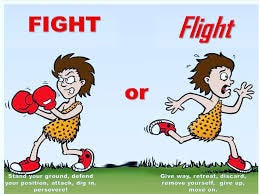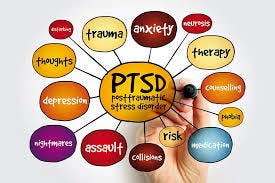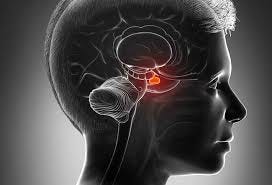Does Shaking Heal Trauma? (No.)
If your trauma healing doesn’t look like an exorcism, read this (11min Read).
TL;DR: Shaking is a Tool, Not the Cure for Trauma
Shaking ≠ Universal Cure: The dramatic shaking seen online is mostly shock trauma discharge (releasing frozen energy from sudden, life-threatening events).
Not a “Knot”: Trauma is not a simple stored object; it’s a complex pattern wired into your nervous system (attachment, hypervigilance, habits).
Complex Trauma: Most people have complex trauma (relational, developmental, chronic stress), which requires slow capacity-building and safety, not intense, forced release.
Healing is Slow: Real healing involves stages: education, building safety, increasing capacity, and then spontaneous unwinding (which may or may not include shaking).
The Medicine: Shaking is just a tool. Relationship, safety, and regulation are the true medicine.
No Need to Perform: If you don’t shake, you are not healing wrong. Your system is not built to impress an algorithm.
The TikTok-ification of Trauma Healing
You open Instagram “for a second,” and suddenly you’re watching a stranger convulse on a yoga mat to ethereal music.
The caption says: “Releasing 20 years of stored trauma in one session.”
Comments are like:
“Omg I want this.”
“How do I release my trauma???”
“Is this TRE??”
And then there’s you.
You’re in therapy. You’re doing the somatic stuff. You’re journaling. You’re trying to feel your feelings without launching yourself into orbit.
You get tears. You get tired. You get numb. You get… mildly shaky sometimes, maybe.
But you’re definitely not out here reenacting a full spiritual exorcism on your living room floor.
So the thought creeps in: “If that’s what trauma healing looks like… am I just not healing hard enough?”
Let me be super clear right at the top: If your trauma healing doesn’t look like an earthquake in your body, you are not doing it wrong.
Let’s be blunt: social media LOVES performance, not nuance.
Big visible reactions = clicks, views, likes, shares.
Subtle long-term regulation isn’t exactly viral content.
And also: no, shaking by itself doesn’t “heal” trauma.
Let’s talk about why.
What Shaking Is Actually About (And What It’s Not)
Shaking has become the poster child of trauma release, but it didn’t start on TikTok; it started in the nervous system.
There’s this classic clip from National Geographic of a polar bear being chased by a helicopter, tranquilized mid-run for research, and then, when it wakes up, it starts trembling violently.
People love to share that and say, “See? Animals shake to release trauma. Humans should do the same.”
But here’s what’s actually happening in that scene:
That bear was in full flight mode, sprinting, heart pounding, muscles ready to run for its life.
Mid-run, it gets chemically shut down. The motor program (RUN) gets frozen in place.
When the drugs wear off and the threat is over, the bear’s nervous system is like,
“Cool, let me just finish that…”
So the “shaking” you see is the bear’s body completing a stored, incomplete survival response.
Its legs are basically still “running,” even though it’s lying down.
That’s called shock trauma discharge.
Shock trauma is something sudden, overwhelming, and life-threatening that happens but when the body tries to fight or flee, it can’t.
Just like the polar bear couldn’t because it was tranquilized.
When this happens, that unfinished survival energy gets “stuck.”
In humans, that might be:
A car accident
A violent attack
A bombing
A sudden medical emergency
Surgery where you’re restrained and terrified
In those situations, once safety is restored, the body sometimes will shake, tremor, or move in weird ways as it completes what it couldn’t finish at the time.
That’s real. That’s valid. That’s beautiful.
It’s also not the full story of trauma.
And it’s definitely not the main story for most people living in modern, industrialized culture.
The Myth of “Stored Trauma”
Let’s clean up this phrase: stored trauma.
The way it gets used online, it sounds like trauma is a little dark marble stuck in your psoas muscle, and if you just hit the right pose and shake hard enough, the marble pops out and you’re enlightened.
Cute, but not how this works…
When we say “trauma is stored in the body,” we’re talking about patterns, not objects.
Your system “stores” trauma in:
Implicit memory – deep, non-verbal emotional memory encoded in places like the amygdala and brainstem. That “I don’t know why, but this feels dangerous” feeling? That’s implicit memory talking.
Procedural memory – the automatic physical habits your body learned: bracing your shoulders, collapsing your chest, smiling when you’re scared, freezing when someone raises their voice.
Autonomic wiring – the way your nervous system defaults to fight/flight, freeze, or fawn based on past experience. Constant hypervigilance? Chronic collapse? That’s wiring.
Stress chemistry – your HPA axis (hypothalamus–pituitary–adrenal) is pumping out cortisol, adrenaline, and inflammation, as if you’re always almost in danger.
Interoception – the way your brain reads internal sensations. If your early life taught you “feeling my body = danger,” your brain will dim that channel or twist what you feel.
Attachment templates – your internal models of relationship: “My needs are too much,” “People leave when I show my feelings,” “If I don’t perform, I’m forgotten.”
That’s “stored trauma.”
Not a knot. Not a blob. Not a single thing you “shake out.”
Could shaking help complete one piece of that puzzle like stored fight/flight energy from a car crash? Yes.
Can shaking, by itself, rewire your attachment system, your sense of self, your boundaries, your relational patterns, and your stress axis?
No.
Because those are whole-system adaptations, not little pockets of stuckness.
We’ve gotta stop looking at tiny pieces of a complex puzzle.
It’s not just the parts, and it’s not just the whole; it’s both!
Why Some People Shake When They Heal
You may be wondering, “Alright, well, why does Karen shake, but I don’t, then Cody?”
Great question.
Sometimes, when people do solid trauma work, especially in modalities like Somatic Experiencing, Somatic Practice, or good somatic EMDR, their body will spontaneously shake or tremor.
Key word: spontaneously.
They’re not forcing it. They’re not “hunting” for a tremor.
They’re following sensation, impulse, and connection, and the shaking emerges as the body finally feels safe enough to complete something unfinished.
That might be:
Legs wanting to run
Arms wanting to push away
The jaw wanting to release a scream that never got to happen
Spine wanting to curl or arch
And as those movements complete, sometimes the system tremors. Sometimes it sighs. Sometimes it yawns. Sometimes it… just gets very, very quiet in a new way.
Shaking is one dialect in the language of discharge.
But here’s the catch: For people with complex trauma (long-term, relational, developmental, attachment-based trauma), big shaking is often the last thing we want to go for, not the first.
Because your system isn’t just holding one frozen “RUN” command like the polar bear.
It’s built an entire operating system around “never fully safe.”
If you go in and hit “release all stored energy now” without building capacity and safety first, your nervous system will either:
Shut it down
Perform it
Or blow up
None of these is the same as deep, integrated healing.
The Trauma You Actually Have Probably Isn’t Polar-Bear Trauma
If you’re reading this, your trauma story probably isn’t: “I had a blissfully regulated childhood and then one day I got into a car crash and that’s the only thing my body is holding onto.”
In fact, I’ve talked with many of you on our monthly subscriber Zoom calls, and I know this isn’t true!
You’re much more likely to be carrying something like:
Anxious, avoidant, or disorganized attachment
Growing up in a house that felt emotionally unsafe, chaotic, or emotionally dead
Being the “parentified” kid, the golden child, the invisible one, or the scapegoat
Medical procedures, surgeries, or chronic illness layered on top
Chronic stress: perfectionism, hustle culture, racism, sexism, homophobia, financial fear
Maybe a few shock traumas sprinkled in for spice
That’s complex trauma.
It’s baked into your early wiring:
Your brainstem learned that “baseline” = vigilant.
Your vagus nerve learned that connection = unpredictable.
Your hormones learned that “relax” is suspicious.
Your body learned that needs = danger.
If you drop a system like that into a high-intensity shaking class with no preparation, no relationship, and no attention to attachment, three things commonly happen:
1. Nothing
You go through the motions. You might feel awkward, bored, or numb. You think, “I guess I’m too blocked for this.”
What’s actually happening: your system is wisely saying, “We are not opening those floodgates in this container, absolutely not.”
2. You override yourself to “get results”
You’re terrified and uncomfortable, but you push through because everyone else is shaking, and you want to heal.
You get a tremor. You might even feel relief.
Underneath, your system just rehearsed its oldest pattern: “Override my no. Perform. Adapt.”
3. You blow open
You shake like crazy. Your emotions explode. Old terror comes roaring up. You feel fragmented, flooded, maybe even a little out of reality.
If there’s not enough support and capacity in place, that doesn’t integrate. It just overwhelms, and your system has to clamp down even harder later.
From the outside, all three can be spun as “release.”
From the inside, only one of them (the slow, relational, resourced version) actually builds long-term regulation.
So if you’ve tried shaking practices and either:
Nothing happened
Or you felt worse afterward
Or it just felt like a weird party trick
You are not broken. You’re not “resistant.”
Your nervous system is just trying not to drown.
What Healing Trauma Actually Looks Like
Let’s sketch this journey out in a more realistic way.
This is something I’ve seen over and over with my clients and myself!
So, here’s the general pattern I see.
Phase 1: Education & orientation: “Ohhh, I’m not just crazy.”
Somewhere along the way, you stumble across nervous system education.
This phase is about:
Giving your cortex good maps of how the nervous system works
De-shaming your survival responses (“Freeze, fawn, collapse, perfectionism — all adaptive, not defects”)
Starting to notice basic state shifts: mobilized vs numb vs settled
You might experience:
Lightbulb moments binge-watching nervous system videos
Realizing your “personality” is actually chronic survival mode
A bit of grief that no one taught you this earlier
This alone can downshift amygdala activation: “If I understand it, it’s less terrifying.”
Suddenly, your “overreacting,” “too sensitive,” “lazy,” “cold,” “clingy,” “shut down” self… starts to look a whole lot like adaptive survival patterns.
Your brain goes, “Oh. I wasn’t defective. I was adapting.”
That’s step one: your cortex gets a new story.
Shame starts to loosen its grip.
Phase 2: Foundations of safety: “My system learns ‘safe enough.’”
Instead of trying to blow the doors off your trauma, you, hopefully with someone safe, start tiny:
Noticing your seat in the chair. Noticing your breath without judging it.
Noticing how your body feels when you talk about something mildly uncomfortable versus something really loaded.
You’re laying regulation groundwork:
Your brainstem is learning “right now is different from back then.”
Vagus nerve: getting even one experience of “I can be distressed and not be abandoned.”
Hormones: getting micro-doses of “we’re allowed to downshift.”
Nothing here looks like an exorcism.
But this is the soil that makes any deeper work possible.
This phase can take months, sometimes longer, and that’s not a failure; that is healing.
Phase 3: Capacity-building: “I can stay with more without breaking.”
Still no exorcism shaking required.
You start to notice that certain things don’t knock you over as hard.
You can feel a wave of shame and stay in your body for three seconds longer.
You can have a hard conversation without disappearing emotionally.
You can be triggered and still remember, faintly, “I have tools.”
Your system is learning: We can feel more without dying.
On the inside:
The amygdala is calming down a bit faster.
The prefrontal cortex is staying online under stress.
Your body is a tiny bit less convinced that every discomfort = danger.
This is capacity. This is regulation. Still no requirement for full-body tremors.
Phase 4: Deeper Unwinding: “Old stuff starts moving… on its own.”
Once there’s enough safety and capacity on board, deeper survival impulses start to show up.
You’re working with your therapist or coach.
You’re tracking something simple, tension in your throat, a knot in your gut, and suddenly:
Your hands want to push.
Your legs want to kick.
Your jaw starts to wobble.
Maybe your body trembles a little.
Maybe heat floods your chest.
Maybe there’s a wave of grief so old it feels ancient.
You’re not forcing anything. You’re not trying to “get to the release.”
You’re following your body’s lead, in relationship, with support.
This is where shaking might show up.
Or not.
What matters isn’t whether you vibrated at 9.5 on the Richter scale.
What matters is: Did you stay with yourself?
Did you feel something that used to scare you and not abandon your body this time?
That’s the moment the nervous system actually starts to rewire.
Phase 5: Integration into real life: “My nervous system has more choices.”
You know healing is landing when it shows up in boring places.
You say, “I’m actually not available for that,” and your whole body doesn’t go into collapse.
You rest without earning it first.
You notice red flags earlier instead of explaining them away for months.
You still get triggered, absolutely.
But the gap between “I’m activated” and “I know what to do with this” shrinks.
Inside your brain:
Your social engagement system is more online.
Your threat circuits are less hair-trigger.
Your body doesn’t treat every boundary, every conflict, every discomfort as the apocalypse.
From the outside?
You just look like someone who’s a little kinder to themselves and a little less chaotic.
From the inside? You’ve rewired the architecture of your nervous system.
Congrats!
So… Is Shaking Bad?
No. Shaking isn’t the villain here.
Shaking can be:
A beautiful, organic part of healing when your system is ready.
A helpful tool for discharging stress or shock trauma inside a relational, attuned container.
A fun movement practice (think dancing, shaking, bouncing) that helps you loosen chronic tension when you’re not using it as a trauma hammer.
The problem isn’t shaking. The problem is selling shaking as the cure.
If you want to experiment with shaking work, a few questions to quietly ask yourself:
Do I feel safe enough with this person or practice to say “stop” or “no”?
Am I doing this because my body is curious or because I feel broken and desperate?
Do I have some basic capacity and regulation on board first?
Does this feel like one tool in a bigger journey, or like “this has to fix me”?
If your body loves it and you walk away more regulated, more connected, and more yourself, cool. Keep it, gently.
If it freaks you out, numbs you out, or leaves you feeling like a failure?
You’re not the problem.
The method is just not aligned with what your system needs right now.
Bottom line: Shaking is a possible expression of healing, not the engine of it.
It’s a symptom of regulation returning, not the source code.
Your Healing Doesn’t Need to Perform to Be Real
Most of the nervous systems I work with don’t need more intensity.
They need more accuracy.
They need safety. They need pacing. They need a relationship that doesn’t abandon, override, or rush them.
So if you’ve low-key been wondering: “Why doesn’t my healing look like theirs?”
Please hear this.
Your nervous system is not here to impress the algorithm. It’s here to protect your life.
Sometimes that protection looks like bracing and shutdown.
Healing looks like gently teaching it another way.
That might involve shaking one day. It might involve tears, nausea, rage, laughter, stillness, or the most anticlimactic deep exhale of your life.
All of those count.
You don’t have to convulse to be healing. You just have to stay.
Stay with your body a little longer. Stay with your feelings a little kinder.
Stay with the people who can meet you in that place with actual attunement, not just technique.
Because shaking is a tool. Relationship is the medicine.
And your healing doesn’t need to be dramatic to be legit…
It just needs to be yours.
You’ve got this.
And, as always… until next time, Live Heroically 🧠
Want to Work With Me? Here Are a Few Ways I Can Help You
Apply to Becoming HER, it’s the 63-day neuroscience-backed reset that helps you finally feel calm, confident, and ready for real love again. Applications for the next small cohort are open — but not for long.
Check out my FREE webinar on The ONE Skill That Attracts Secure Love Fast. If you’re smart, attractive, successful, and self-aware, but love still feels like a minefield, this is for you!
Grab my new ebook: Exactly How to Become Emotionally Available: It’s a step-by-step guide for attracting and keeping the love you seek, built for the success but single among us!
Become a paid subscriber to the Mind, Brain, Body Lab Digest: You’ll get subscriber-only video posts, email replies, access to my entire blog archive, early access to new products, workshops & tools I create!
Supporting Research
Berceli, D. (2008). The revolutionary trauma release process: Transcend your toughest times. Vancouver, BC: Namaste Publishing.
Kain, K., & Terrell, S. (2018). Nurturing resilience: Helping clients move forward from developmental trauma—An integrative somatic approach. Berkeley, CA: North Atlantic Books.
Levine, P. A. (1997). Waking the tiger: Healing trauma. Berkeley, CA: North Atlantic Books.
Levine, P. A. (2010). In an unspoken voice: How the body releases trauma and restores goodness. Berkeley, CA: North Atlantic Books.
Porges, S. W. (2011). The polyvagal theory: Neurophysiological foundations of emotions, attachment, communication, and self-regulation. New York, NY: W. W. Norton.
Sapolsky, R. M. (2004). Why zebras don’t get ulcers (3rd ed.). New York, NY: Henry Holt.
van der Kolk, B. A. (2014). The body keeps the score: Brain, mind, and body in the healing of trauma. New York, NY: Viking.
Lyon, I. (2019). Does shaking heal trauma? [Video]. YouTube. (Transcript referenced for this article.)





















The distinction between shock trauma and complex trauma is so crucial. I've spent way too long thinking my healing should look like those viral videos, when really my nervous system just needed slow, relational capacity building. The part about how complex trauma isnt a knot to shake out but a whole wiring pattern really landed for me.